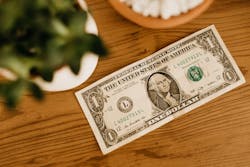In the first round of the Paycheck Protection Program (PPP), the federal government allocated $350 billion to businesses around the U.S., including many in the automotive service industry.
In late December, a new coronavirus relief bill was signed into law that, among many things, allocated an additional $284 billion in PPP loans specifically for small businesses.
The goal of the second round of loans is to get aid to businesses who were passed up by larger corporations the first go-around and to continue helping small businesses who need a second round of assistance, says Charles Abell, public affairs specialist for the Small Business Administration (SBA)
“The concern was minorities, Native Americans, underserved, underprivileged communities, and small banks were all stepped on by bigger banks, by bigger businesses,” he says. “That’s why a lot of changes were made.”
The Biden administration announced they will identify navigators to ensure small businesses in communities of color and underserved communities can better access the PPP. There is also $15 billion set aside for community financial institutions. There are also new restrictions in place that tighten which businesses can apply.
Businesses who did not apply or receive funds in the first round should apply for first draw PPP loans. These applications will be given preference over those who already received funds. Businesses that received funds in the first round are not eligible for first draw loans, but can apply for what is called a “second draw” loan, which gives them second priority.
Who is eligible for the second round of PPP loans?
Eligibility has been tightened from the first round of PPP. Businesses must have 300 or fewer employees to be eligible for the loan, down from 500 in the previous round.
Businesses must also demonstrate a 25 percent reduction in revenue in at least one quarter of 2020 compared to 2019.
Businesses who applied for loan forgiveness on their first PPP loans are eligible for second-draw loans as long as they meet the general requirements (<300 employees, 25 percent reduction in revenue).
Loan forgiveness was one of the biggest draws of the first round of PPP. From April 2020 to early January 2021, the SBA paid over $7.1 billion across more than 1.8 million loans.
To qualify, borrowers had to show employee and compensation levels were maintained, that the at least 60 percent of loan proceeds were spent on payroll costs, and that the remaining proceeds were spent on eligible expenses The SBA is currently reviewing plans for loan forgiveness for the second round of PPP.
How can businesses apply?
To assist those small businesses without an existing banking relationship with a PPP-participated lender, the SBA offers Lender Match, a free, online tool that pairs borrowers with lenders in their community based on their needs.
Once they’ve identified a lender, businesses should make sure to have the necessary paperwork. Businesses should have a copy of their driver’s license or an official ID and have the business’s most recent IRS form showcasing the business’s payroll, like Form 941, 1099, or a 1040, for example.
Business owners should also establish basic company and contact information, like a preferred phone number, email address, and preferred person to be contacted regarding financial matters.
More or less information may be needed depending on the lender.
When is the deadline to apply?
The deadline to apply for both first and second draw loans is March 31. However, the SBA recommends not waiting until the last minute. Because you are applying to a lender first, they need to time, approximately five days, to process the application. Then it goes to the SBA for approval.
“We strongly recommend if anybody is doing first or second draw that they try to get their applications, or at least work with their lender, before the last week in March,” Abell says.
The sooner you apply the better. Applications opened for first draw loans on Jan. 11 and funds are being approved every day. As of January 24, 400,000 loans were approved for roughly $35 billion in 2021.
Unlike the first round of PPP, which exhausted its funds in the first two weeks of the program, the second round of PPP is expected to have enough money to last through the March deadline, Abell says.





